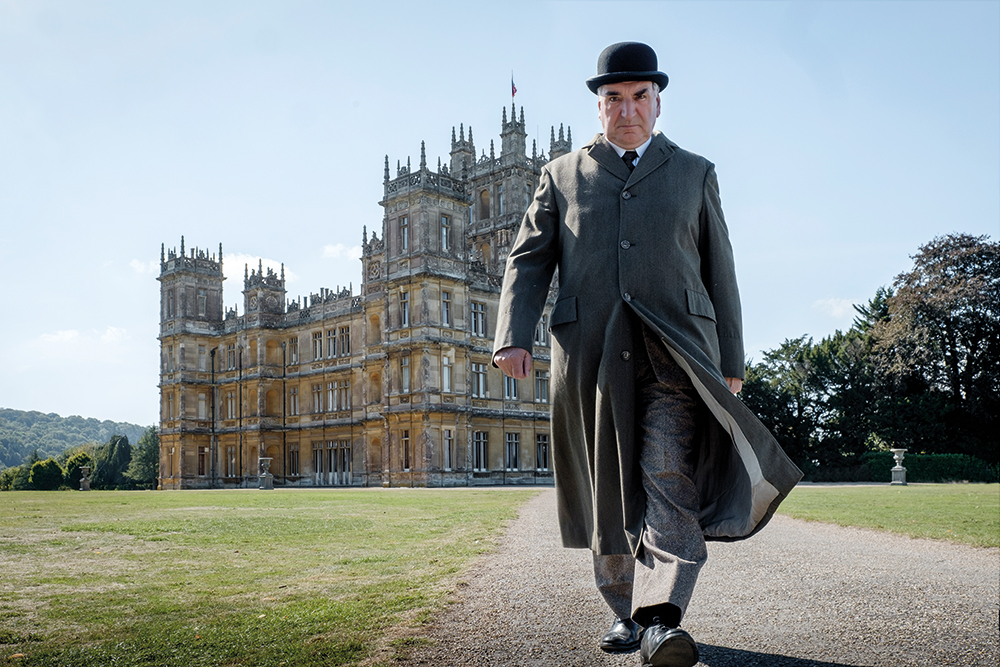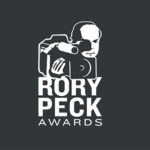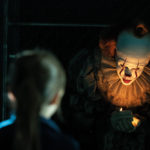
An infusion of royal-tea
Posted on Oct 29, 2019 by Alex Fice
Downton is back, but this time it’s on the big screen and the royals are visiting. We talk to DOP Ben Smithard about how he made the already grand, grander
Words Chelsea Fearnley / Pictures Nbc universal
It’s 1927 and both the downstairs and upstairs residents at Downton Abbey are in a state of full-blown panic. The morning post has brought news of a visit from King George V and Queen Mary. “A royal luncheon, a parade and a dinner,” exclaims Mrs Patmore about the decadent itinerary. “I’m going to have to sit down.”
For six series of Downton Abbey, the TV series’ screenwriter and creator, Julian Fellowes, has intertwined the stories of more than a dozen fictional characters with real-life historical events. And it’s true that in 1912 the first Windsors took to Wentworth Woodhouse in Yorkshire – where Downton is set – in what was thought to be the earliest charm offensive between the royals and general public.
 Favourite faces return: (from left) Lesley Nicol, Sophie McShera, Jim Carter and Phyllis Logan
Favourite faces return: (from left) Lesley Nicol, Sophie McShera, Jim Carter and Phyllis Logan
Not only does this parallel to history serve as a good premise for the film, it unifies the focus between the downstairs and upstairs residents because, despite their different obligations to the house, they’re all working to the same end: the royal visit has to be a success. DOP Ben Smithard explains, “The story is, in essence, rather simple: it’s people coming over for dinner. But in the twenties – in that society – it would have been the biggest event of the year, so it had to be perfect.”
Smithard had not worked on the series previously, but after shooting films like Belle and King Lear, he was, to say the least, fairly familiar with the period genre. “I hadn’t really watched the series and I was shooting another film when I got offered the job. So, at the end of each day, I would go home and watch two or three episodes a night. And within the space of six weeks, I had watched everything,” he recalls.
 Michelle Dockery with director Michael Engler and DOP Ben Smithard
Michelle Dockery with director Michael Engler and DOP Ben Smithard
While the series served as a good reference for the film, Smithard also drew upon paintings and photographs and upon his own visual references from films that he had shot before. “It needed to be cinematic, which was quite difficult to achieve with the shoot taking place in the same locations used for TV, but the producers didn’t expect me to follow a line from the series, and I was pretty much given free rein to take it in the direction I wanted.”
 Allen Leech with Michelle Dockery
Allen Leech with Michelle Dockery
He continues: “I don’t know if it was ever referenced for TV, but Gosford Park – which is a film Fellowes had written before – was a big reference for me, because it perfectly encapsulates the dynamic between how the people downstairs and upstairs lived. And that’s what made the film, especially the downstairs part of it, because when you’re watching it, you really feel as though you’re walking through a moment in time.”
In that society it would have been the biggest event of the year, so it had to be perfect
 Robert James-Collier
Robert James-Collier
A new era of Downton
If you’ve seen the trailer, or the movie for that matter, you will have seen Lady Edith, her husband, Herbert Pelham, and their daughter, Marigold, drive back to the old country home in time for the royal affair. “No maid, no valet, no nanny, even!” Robert Crawley exclaims as he greets his daughter on the carriage drive at the front of the house. “It’s 1927,” Pelham replies. “We’re modern folk.”
 Exterior scenes were mostly shot using ambient light; castle interiors, on the hand needed more input
Exterior scenes were mostly shot using ambient light; castle interiors, on the hand needed more input
Smithard’s camera choice had to be something cinematic; it needed to have a different look to the TV series

Throughout the series, the differences between the downstairs in comparison to the upstairs residents are highlighted by their vernacular and costume, but also, of course, by the use of light in each setting. It’s much darker downstairs than it is upstairs. But with what seems ‘a new era’ approaching, are those differences waning? Smithard assures, “The upstairs residents haven’t suddenly installed bigger windows downstairs just to make their lives a little bit easier and a little bit brighter. It is still the same.”
The servants’ quarter at Highclere Castle (Downton Abbey) has undergone a series of modernisations to help it withstand the test of time. It therefore retains no resemblance to how it would have looked in the early 20th century, and so, all of the downstairs scenes are shot on a stage in London, but this meant that it was easier for Smithard to light. He explains, “The stage is painted with a colour that reflects a gloominess from the light. I didn’t really have to do too much to it because of the paintwork, which is dark grey. There’s also a little bit of candlelight and gaslight, but not much because the house staff have taken
to using electricity, like a lot of people at that time.”
Upstairs was harder to light due to the design of the house, and although a lot of the interior day scenes appear to be lit by natural light coming in from its large and decadent windows, most of it is artificial. “The orientation of the house is a little odd – the front hardly ever gets any sunlight. It was a Victorian upper-class thing, they didn’t sit out in the sun, even when they were indoors – and there aren’t any scenes at the back of the house because that’s not where they used to frequent.”

He continues, “This proved useful for all the big scenes that were shot outside the front of the house, such as Lady Edith’s arrival, I could always shoot them with ambient daylight; there wasn’t a requisite for additional lighting on the day exteriors.”
The upstairs interiors are awash with stately red and yellow, but despite the bright colours, lighting these scenes wasn’t always easy. “They involved a lot of characters; whether it be a dinner or a discussion in the library, I was usually working with 20 or 30 actors in one room. And trying to make those scenes look interesting and good, and effective, was quite a struggle, a challenge I should say, but I’m used to doing that, I seem to work on productions with quite large casts.”
Fellowes’ script nuances
The film sees the female characters become increasingly liberated as time moves forward. Lady Mary, who was introduced to TV audiences as someone likely to engage in a sex scandal involving a foreign diplomat, has accepted the huge – and by contrast, boring – responsibility of managing the family estate. And Lady Edith, who has for so long been at the forefront of insult, tragedy and heartbreak, has moved away to Edinburgh to start a family and build a career in publishing.
“The female characters are starting to feel more empowered. In the series, the female characters’ personalities aren’t as strong because women were prohibited from being like that in the early 20th century. Towards the end of the series, the female characters start to have more options and choices, but with new opportunities come different kinds of problems, and those problems are pronounced in the film.”
“But that’s all in the writing. Fellowes writes in these little moments, and if you watch carefully, you will see that all the leading female characters have something to say about their female status. And I think that actually, the female characters are more interesting than the male characters. There’s more happening in the women’s lives than in the men’s, but I don’t know why Fellowes wrote it like that.”
Smithard esteems Fellowes’ equivalences to history in the script, because, like the “little moments” he describes the female characters as having, they’re subtle and also don’t distract from the fictional storyline. “There’s something that’s really interesting. There’s a character in the film, she’s one of the dressers in the royal household, and she’s having a conversation about Queen Mary, and unless you knew about Queen Mary and what she was like and what she did, then you would miss that.”
He continues, “I can see why Fellowes didn’t embellish those details. It would have taken the story on a tangent that it didn’t need to go on. But from a writer’s perspective, it’s all about back story, there is a back story to each character and a reason as to why they say certain things. Fellowes, on some occasions, chose not to divulge what those were because it would have taken the story in a different direction. Some writers do that, and I find it quite fascinating, but it’s like, ‘are you in on
the joke?’.”
In this instance, the joke is about Queen Mary’s daughter, Princess Mary, and her relationship with Lord Harewood, who she was married to. It wasn’t a happy union and the princess, who was sick and bored of her marriage, went to see the Queen at Buckingham Palace to ask for a divorce. But royal protocol at that time would never have allowed it, and legend has it the Queen frogmarched the princess back to her house in Yorkshire, never to speak about it again.
Flying high
Helicopter Girls, in partnership with Marzano Films, supplied the aerials on Downton Abbey. The two companies joined together a year ago to become one of Europe’s leading aerial units, offering helicopter and drone aerials. This was an obvious choice for Ben Smithard, whose vision for a 50-mile steam train tracking scene required something a little larger than a drone. The drones were of course needed for the aerials around the house; Highclere Castle is a real building, home to Lady Carnarvon, so a helicopter would have been excessive and a tad noisy. Privacy was considered before the shoot and the team never flew the drones too close to the castle. Emma Boswell, director of operations, tells us: “The family owns racehorses, so there had to be a dialogue about when an aerial scene was going to take place, so the horses could be moved and wouldn’t be spooked.”
The castle really lent itself to low-level aerials, so a lot of the film’s scenic shots were taken around it. “The closing shot of the film is a drone shot of the castle, which starts low and pulls out slowly to manoeuvre around the landscape at sunset. It was important to Ben that the light was perfect, so we were working to make sure we were able to shoot at the right moment,” Boswell reveals. The drones were also used to track the post boy arriving and cars driving up to the castle.
The scene with the steam train was particularly exciting for Smithard, who told us that he rarely gets to use helicopters to shoot aerials. The aircraft was a Freefly Alta 8 with Mōvi Pro stabilised gimbal, carrying an Alexa Mini LF with Zeiss Ultra Primes. Boswell notes: “We had a separate iris hand unit for Smithard to control as he likes to work that way; he’s got such a clear vision about what he wants and he’s just a great person to work with.”
Helicopter Girls, in partnership with Marzano Films, is now busy working on the 25th Bond film.
All aboard the steam train
You don’t really get the opportunity to use a full-size helicopter on set anymore, because everyone wants to use drones
Smithard’s camera choice had to be cinematic; it needed to have a different look to the TV series, which had famously been shot on Arri Alexa since season two.
He explains: “I wanted to broaden the horizon of the image and make it bigger. I needed a camera that had a wider range of colour, contrast and luminance… In an ideal world, I would have shot Downton on 35mm or 65mm film, but that wasn’t really an option. So, I shot it on the best camera and best lenses that I could get hold of, and when you see it on the big screen, you’ll hopefully see what I was trying to achieve.”
 Downton Abbey (Highclere Castle) in all its glory, with a Sony Venice on an Ari Rental GF16 crane in the foreground
Downton Abbey (Highclere Castle) in all its glory, with a Sony Venice on an Ari Rental GF16 crane in the foreground
Sony Venice was paired with Zeiss Supreme glass, a companion lens for large-format cameras. Smithard used the 25mm, 29mm, 35mm, 50mm, 85mm and 100mm and explains, “We got one of the first few sets, and I thought that they were going to be a little bit too sharp or a little bit too crisp, but they’re actually really good. I mean, they’re as you would expect from a company that’s been designing lenses
for over 100 years. Zeiss do know what they’re doing.”
He continues, “I also had some involvement in the design of the Sony Venice. I had shot two films on the Sony F65 [The Best Exotic Marigold Hotel and Belle], which is the Venice’s predecessor, and I knew it was coming because Sony asked me to be involved in the redesign. It’s a very boring thing, but basically, I was put into a room with a load of Japanese designers for about three hours and they asked me about the functionality and appearance of the control panel. And so, I tested the Venice and it’s a great camera. I’ve used it on a couple of features now.”
Moving the camera required a Steadicam, an Arri Rental GF16 crane and two PeeWee Mk4 dollies – “the usual stuff” as Smithard notes. “What’s interesting is that I got to use a helicopter for this film, and I hadn’t used one in a long time. I love doing helicopter work, because I’ve shot on them all around the world, but mainly on commercials.”
The helicopter was used to capture the 50-mile journey of a steam train, a shot which, in the film, represents the journey between London and Yorkshire. The train is carrying the letter from the royal household that notifies the Crawley family of the King and Queen’s visit. “You don’t really get the opportunity to use a full-size helicopter on set anymore because everyone wants to use drones, but you can’t fly a drone and chase a train for 50 miles.” He finishes, “Although the aerials around Downton Abbey are all done with drones… it would be a bit risky to fly a helicopter so close to the world’s most famous abbey!”

The film was released in UK and US cinemas on 13 and 20 September respectively. Virtually every major cast member is returning for the Crawley family reunion, including Dame Maggie Smith as the Dowager Countess.
Downton Abbey is on general release in the UK and US







